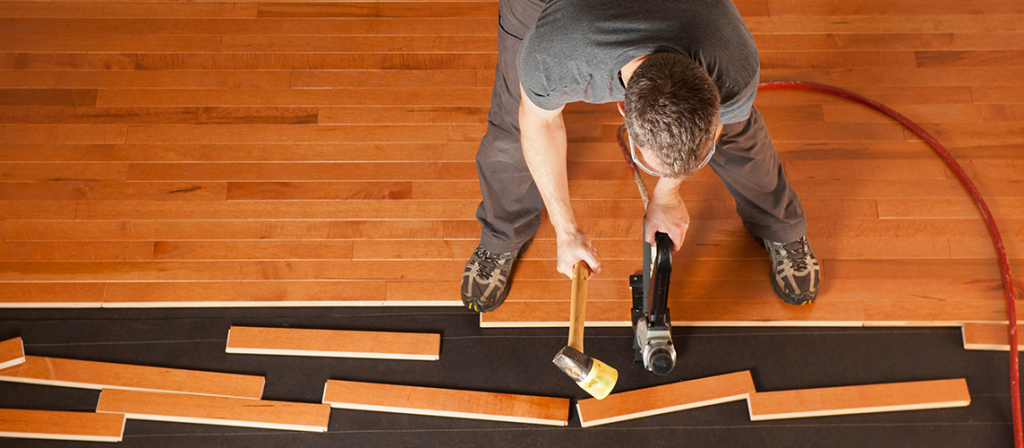Flooring is more than just a surface to walk on—it defines the character of a space, enhances comfort, and supports the overall design of your home. Well-designed floors balance functionality with aesthetics, ensuring durability, ease of maintenance, and visual appeal. Whether you are renovating a single room or constructing a new home, careful planning during floor installation plays a crucial role in achieving the perfect combination of beauty and practicality.
Floors must withstand daily use, resist wear and tear, and complement the home’s interior design. Modern techniques and materials make it easier than ever to create spaces that are both attractive and functional.
Choosing the Right Flooring Material
Selecting the ideal material is the first step toward floors that are both practical and visually appealing. Different materials offer unique benefits depending on the room and intended use.
Hardwood Flooring
Hardwood is a classic choice known for its timeless beauty and durability. It adds warmth and elegance to any room while providing a long-lasting surface. Proper floor installation ensures that hardwood planks remain stable and resist warping or cracking over time.
Laminate Flooring
Laminate offers the look of wood or stone at a lower cost. It is highly resistant to scratches and stains, making it ideal for high-traffic areas. Easy installation techniques allow homeowners to achieve professional results efficiently.
Tile Flooring
Tile provides unmatched durability and water resistance, making it perfect for kitchens, bathrooms, and entryways. It is available in various designs, patterns, and finishes, giving homeowners the freedom to create visually stunning spaces.
Vinyl and Luxury Vinyl Planks
Vinyl flooring combines affordability, durability, and water resistance. Luxury vinyl planks mimic wood or stone finishes while offering soft, comfortable surfaces underfoot. Correct floor installation ensures the tiles or planks fit tightly, preventing gaps and uneven surfaces.
Carpet Flooring
Carpet adds warmth and comfort to bedrooms and living areas. It provides noise reduction and insulation but requires careful installation to ensure smooth seams and secure edges.
Balancing Functionality with Style
A successful flooring design balances practical concerns with aesthetic appeal.
Durability and Longevity
Functional floors must withstand heavy use without showing signs of wear. Professionals consider the level of foot traffic, exposure to moisture, and potential impacts when recommending materials. A durable floor reduces long-term maintenance costs and protects your investment.
Maintenance and Cleaning
Choose flooring that aligns with your lifestyle. Materials like tile, vinyl, and laminate are easier to clean and maintain, while hardwood requires regular care to preserve its beauty. Planning proper floor installation with attention to subfloor preparation ensures surfaces remain easy to maintain over time.
Comfort and Safety
Soft flooring options, cushioned underlays, and slip-resistant surfaces enhance comfort and safety. Homes with children or elderly family members benefit from surfaces that prevent slips while providing comfortable walking areas.
Planning Your Floor Installation
Proper planning is critical to achieving floors that are both functional and visually appealing.
Assessing the Subfloor
The subfloor must be level, dry, and structurally sound. Irregularities can cause uneven surfaces, squeaks, or premature damage. Professionals inspect and prepare the subfloor to ensure long-lasting results.
Choosing the Layout
The layout of the flooring impacts both aesthetics and usability. Patterns, plank orientation, and transitions between rooms are planned to enhance the sense of space and visual flow.
Acclimating Materials
Many flooring materials require acclimation to room temperature and humidity before installation. This step prevents expansion or contraction after installation, preserving the integrity and beauty of your floors.
Professional Installation Techniques
Correct floor installation involves precise measurements, cutting, and fitting. Skilled installers use methods suited to the material—floating floors, glue-down applications, or mortar settings for tile—to achieve seamless results. Finishing touches such as baseboards and trim complete the polished look.
Enhancing Visual Appeal
A visually stunning floor complements the rest of the home while reflecting personal style.
Color and Finish Choices
Color can dramatically affect the perception of space. Lighter floors make rooms appear larger, while darker tones create a cozy, intimate atmosphere. Finishes like matte, glossy, or textured surfaces add depth and character.
Patterns and Textures
Creative patterns, such as herringbone, chevron, or geometric tiles, elevate the aesthetic of any room. Textured surfaces can add a tactile element, enhancing both appearance and functionality by preventing slips.
Coordinating with Interior Design
Flooring should complement furniture, walls, and other design elements. Choosing a consistent style or contrasting materials creates a cohesive and inviting environment that feels thoughtfully curated.
Benefits of Professional Floor Installation
While DIY projects are popular, professional floor installation ensures precision, longevity, and superior results.
Expertise and Efficiency
Experienced installers handle challenges such as uneven subfloors, intricate layouts, or high-traffic areas efficiently. Their expertise guarantees that floors are level, secure, and visually consistent.
Quality and Durability
Professional techniques minimize mistakes that can cause gaps, uneven surfaces, or premature wear. A proper installation ensures that floors last longer and perform better.
Warranty and Peace of Mind
Many professional services offer warranties on both labor and materials, giving homeowners confidence that their investment is protected.
Maintaining Your Floors
Even the most beautiful and well-installed floors require regular care.
Cleaning and Care
Use appropriate cleaning solutions for each material. Sweep or vacuum regularly to remove dust and debris, and mop with care for moisture-sensitive surfaces.
Protective Measures
Felt pads under furniture, area rugs in high-traffic zones, and mats near entrances reduce wear and tear. Prevent excessive sunlight exposure to avoid fading.
Periodic Inspections
Inspect floors periodically for scratches, loose tiles, or damaged planks. Timely repairs maintain functionality and preserve the visual appeal of your space.
Conclusion
Designing floors that are both functional and visually stunning requires careful planning, thoughtful material selection, and precise floor installation. By balancing durability, comfort, and aesthetic appeal, homeowners can create spaces that are beautiful, practical, and long-lasting.
Whether you are renovating a single room or upgrading an entire home, proper planning, professional techniques, and attention to detail ensure floors that enhance your lifestyle while standing the test of time. Investing in quality design and installation transforms any space into a visually striking, functional, and welcoming home.



